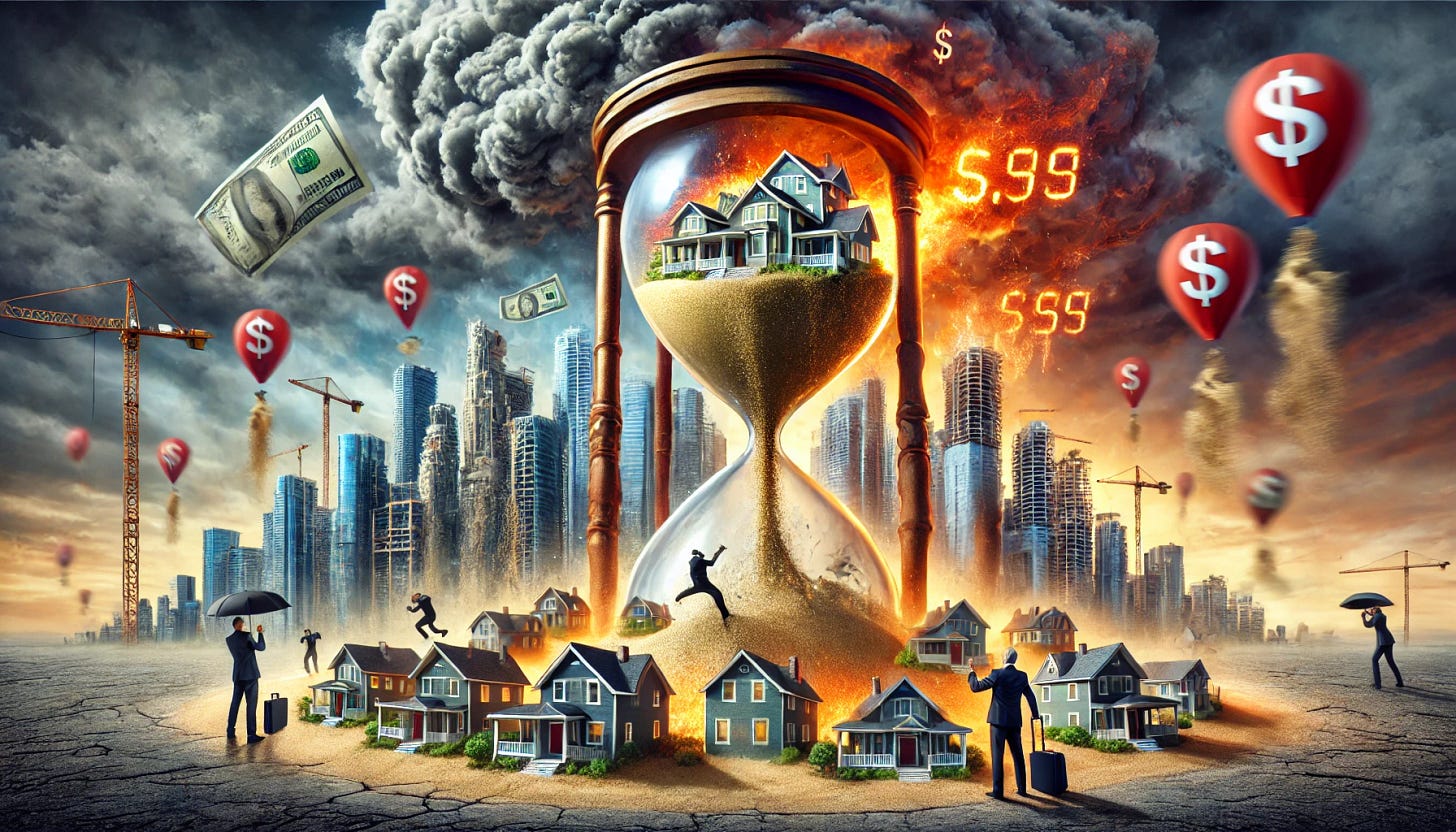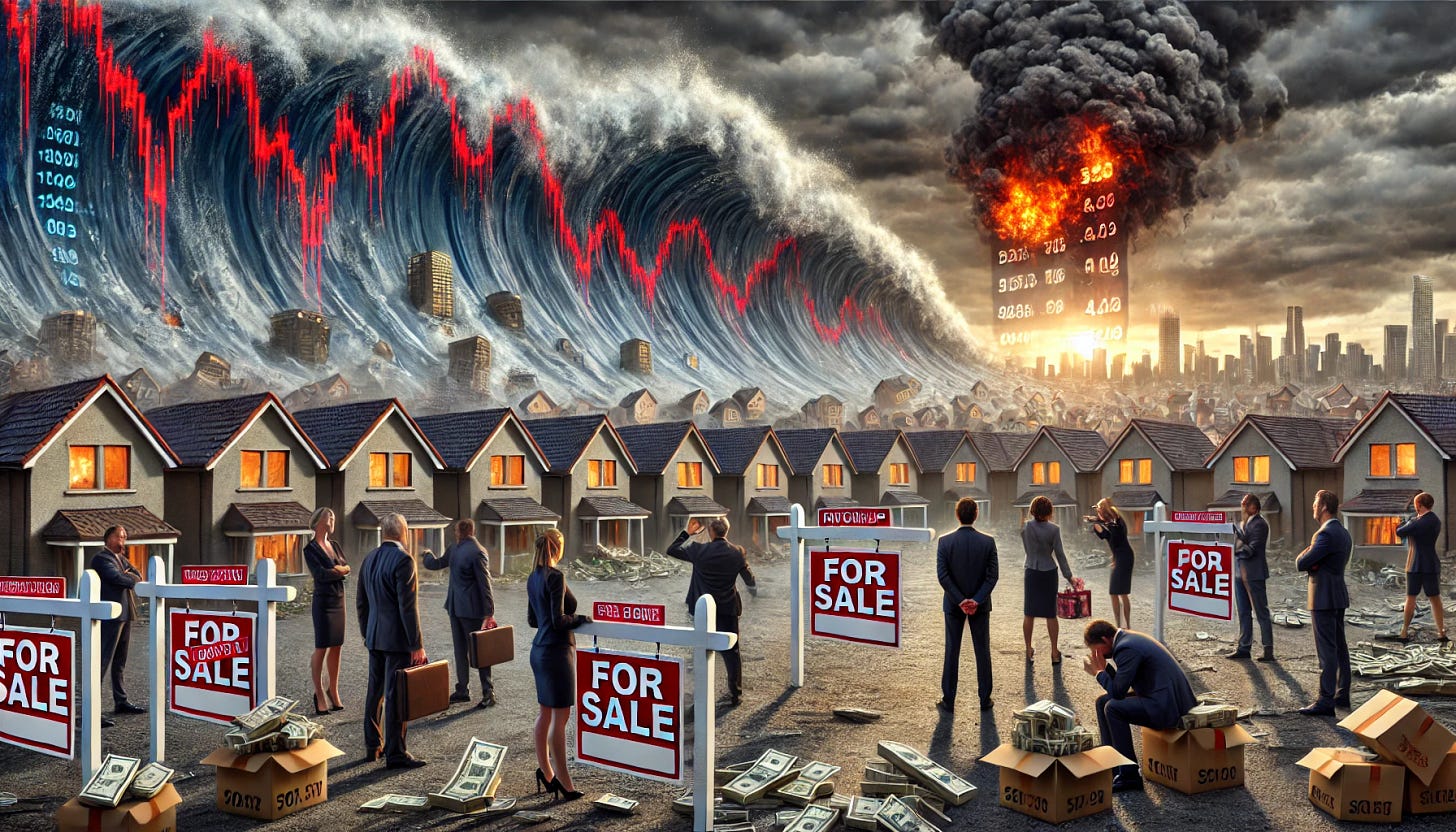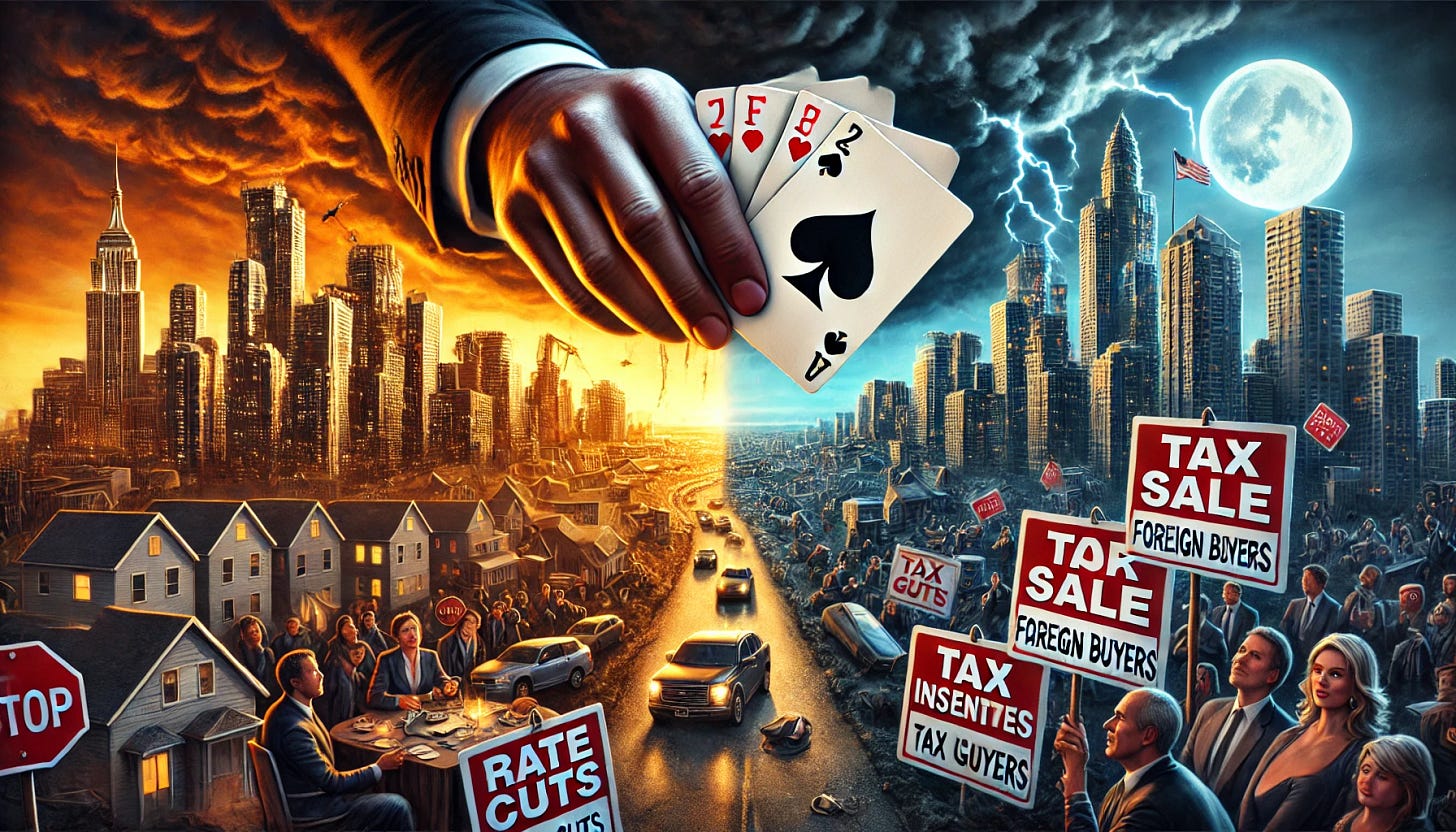The Market Was Recovering—Now We Have No Idea What’s Coming Next
One thing is certain: uncertainty is the only guarantee.
For months, it looked like real estate was finding its footing again. Buyers were cautiously re-entering, sellers were adjusting their expectations (some, begrudgingly), and the sense of doom that had hung over the market was starting to lift. We even started to see multiple offers again.
And then—just as confidence was creeping back in—the most unexpected thing happened.
A trade war with the USA came out of left field, blindsiding the market and throwing everything into chaos. Tariffs, economic uncertainty, and skyrocketing costs have suddenly turned what looked like a fragile recovery into a full-blown crisis.
Will prices soar as construction costs explode and developers put projects on hold, tightening supply? Or will they drop further as uncertainty keeps buyers frozen and sellers start slashing prices out of desperation?
Two Forces Are About to Collide—Which One Wins?
The real estate market is now at a critical inflection point. With a surprise trade war sending shockwaves through the economy, two conflicting forces are about to go head-to-head: rising construction costs and supply shortages vs. buyer fear and downward price pressure.
Which force prevails will dictate the next major market move.
Scenario 1: Prices Skyrocket—The Supply Squeeze Takes Over
For prices to surge, supply needs to be the dominant issue. And thanks to higher construction costs, delayed projects, and developers hitting pause, the market could be headed straight for a severe shortage of new homes.
Here’s how this scenario plays out:
1. The Cost of Building Goes Vertical
With tariffs on key materials like steel, lumber, glass, and concrete, developers are seeing cost projections spiral out of control. Construction budgets that were barely viable before? Now they don’t pencil out at all.
Instead of absorbing the costs, developers will pass them down to buyers—meaning any new housing that does get built will launch at higher prices than expected.
2. Project Cancellations Shrink Future Supply
Developers aren’t in the business of selling at a loss. If their projects don’t make sense financially, they simply won’t build.
Expect a wave of project cancellations, construction slowdowns, and landbanking as developers wait for better conditions. This will choke future supply, leaving buyers with fewer choices and tighter competition when demand returns.
3. The "Wait-and-See" Buyers Get Burned
Right now, many buyers are waiting on the sidelines, hoping for a better deal. But if supply shrinks and interest rates start easing, demand could flood back in all at once—triggering bidding wars, price spikes, and a sudden rush of FOMO-driven activity.
Possible Outcome: Prices rise faster than expected, driven by lack of new inventory and pent-up demand. Preconstruction projects that survive will see stronger-than-expected absorption rates, and resale market prices could see a steep rebound by 2025.
Scenario 2: Prices Crash—Buyer Fear and Inventory Pileup
On the flip side, fear and hesitation could take hold, creating a self-reinforcing downward spiral. This isn’t just about affordability—it’s about confidence, and right now, confidence is cracking under the pressure.
Here’s how this scenario unfolds:
1. Buyers Freeze and Demand Vanishes
With economic uncertainty at an all-time high, potential buyers start thinking, "Why buy now when prices might fall further?"
This mentality creates an avalanche effect:
Fewer people attending preconstruction sales centers.
Fewer offers on resale listings.
More homes sitting longer on the market.
This builds inventory and forces sellers to cut prices to compete.
2. Forced Sales and Desperation Listings Hit the Market
The real pain comes when sellers have to sell—not because they want to, but because they have no choice.
Preconstruction buyers who overextended may try to offload assignments at a loss.
Investors with negative cash flow could start liquidating rental units.
Homeowners struggling with high mortgage rates may hit their breaking point.
More listings = downward price pressure.
3. The Bank of Canada Is Handcuffed
Normally, when real estate starts sliding, rate cuts are the go-to rescue plan. But with inflation still a concern and now a trade war adding pressure, policymakers might not have the flexibility to act fast.
If the Bank of Canada delays rate cuts, or worse—if rates stay higher for longer—then we could see a deeper market contraction as borrowing costs remain painfully high.
Possible Outcome: Prices continue to decline, fueled by a mix of economic fear, rising supply, and higher-for-longer interest rates. Some projects get abandoned entirely, and resale markets feel even more downward pressure into 2025.
The Wild Card: Government Intervention—Will They Step In?
When the real estate market teeters on the edge, governments don’t just sit back and watch it collapse.
That’s why the real wild card here is policy intervention—whether it comes in the form of rate cuts, foreign buyer policy shifts, or new housing incentives.
Here’s what could change the game overnight:
1. Foreign Buyers Make a Comeback?
Over in BC, Bob Rennie and Mark Carney are quietly crafting a plan that could reopen the market to foreign buyers—but in a controlled way.
The idea?
Limit purchases to new construction to prevent speculation in the resale market.
Offer incentives for foreign buyers willing to hold long-term rather than flip.
Create tax structures that benefit developers while injecting much-needed demand.
If this foreign buyer re-entry plan gains traction, expect a huge capital inflow into preconstruction—saving stalled projects and stabilizing prices.
2. Interest Rate Cuts Come Sooner Than Expected
If inflation cools faster than forecasted and the Bank of Canada sees the market unraveling, they may be forced to cut rates ahead of schedule—bringing affordability back and reigniting demand.
3. Government Housing Incentives Kick In
Expect new policies aimed at boosting supply and affordability:
Incentives for developers (tax breaks, reduced fees) to restart stalled projects.
Mortgage assistance programs to get buyers off the sidelines.
Targeted zoning reforms to fast-track more housing.
If the right mix of interventions happens, the market could turn back around quickly—with 2025 shaping up to be a rebound year instead of a prolonged correction.
Buckle Up—This Ride Just Got Bumpy
Here’s what we do know: uncertainty is back in full force. And when uncertainty takes over, it creates winners and losers—depending on who adapts and who freezes.
Final Thought: Which Side Wins?
Right now, the battle lines are drawn.
If supply collapses and demand holds steady → prices spike.
If buyer fear takes over and inventory piles up → prices fall.
If the government steps in → the market takes an unexpected turn.
One thing is certain: uncertainty is the only guarantee.
Anyone claiming they know exactly what happens next? They’re lying. But one thing’s for sure: real estate isn’t done surprising us yet.
The only question now is: Are you ready for the next twist?








